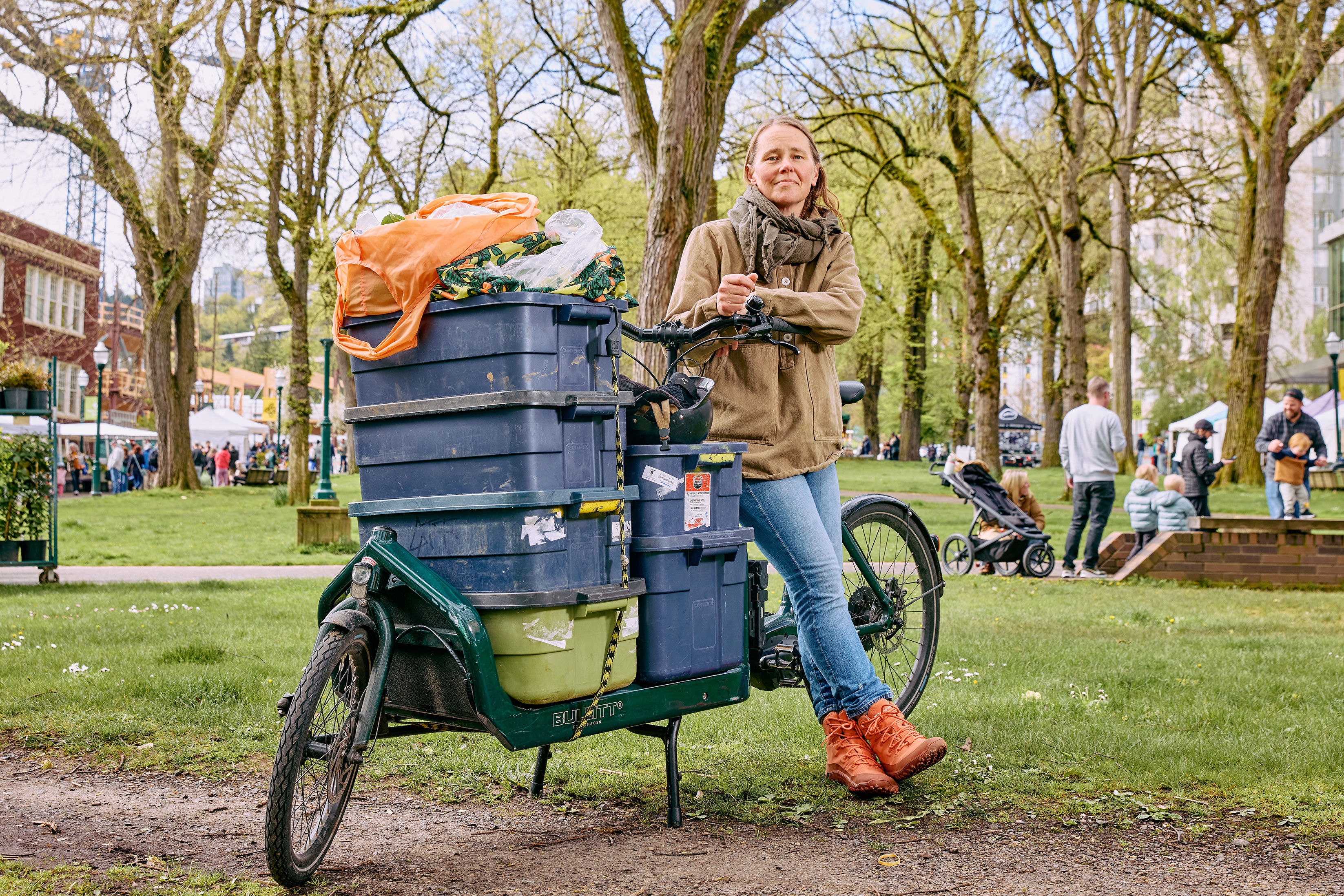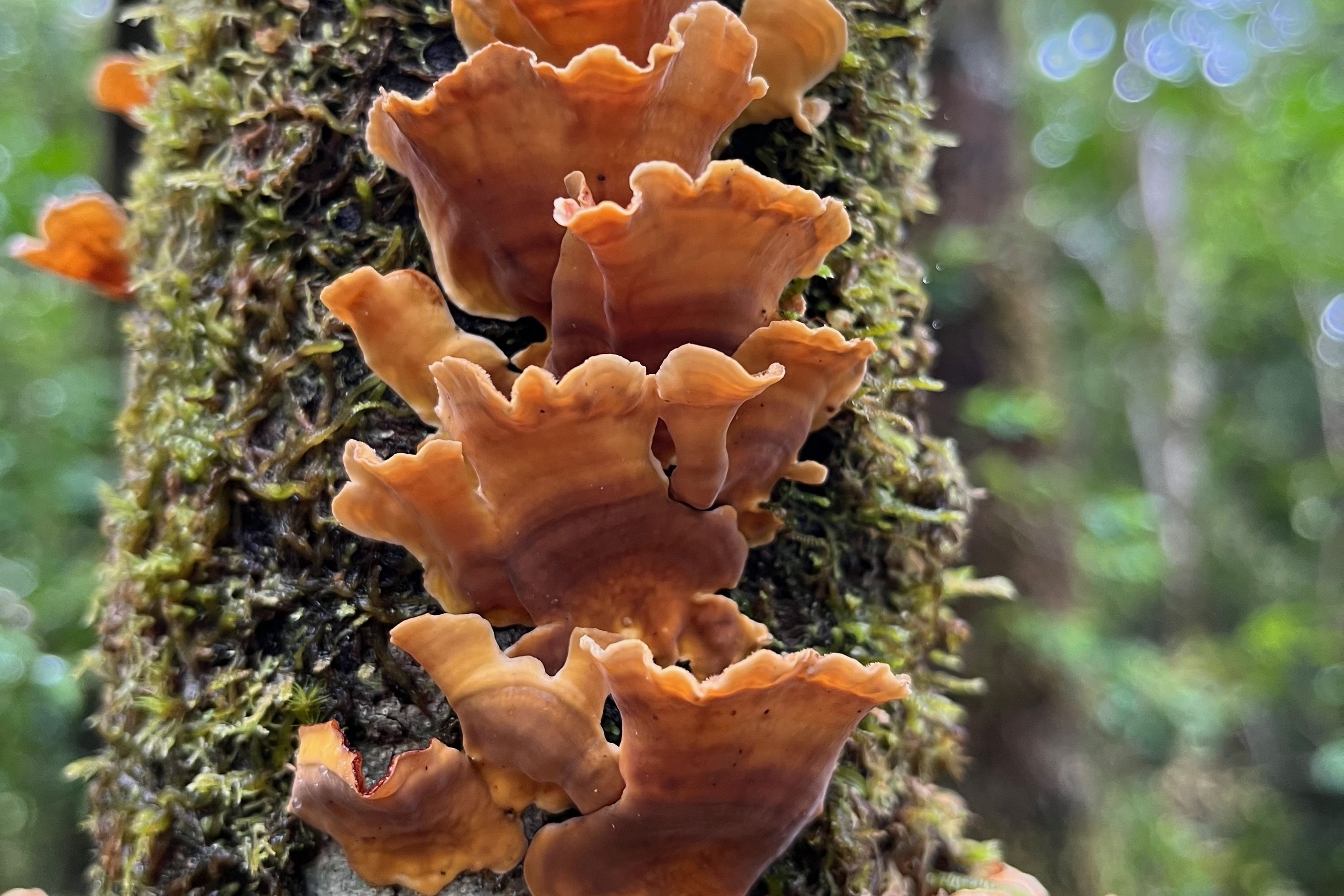Gateway Green, an Urban Park in the Works for 12 Years, Is Open
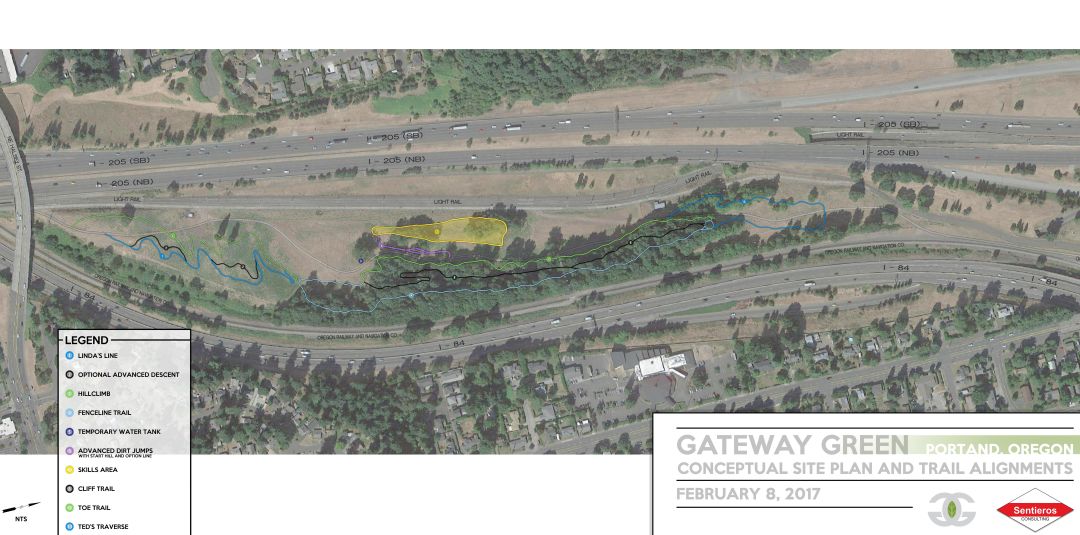
Image: Friends of Gateway Green
Portland has a penchant for green things. We’ve got the North Portland Greenway, green energy, the Green Loop, and green federalism. We even bleed green-and-white. (Go Timbers!)
Now we can (finally) add Gateway Green to the list. Plans for Portland's newest park have been in the works since 2005. But Gateway Green isn't your average patch of grass: these 38 acres have been primarily developed for mountain bikers—and they're confined to a caterpillar of land wedged between I-205 and I-84 just west of Maywood Park.
Yes, Gateway Green is an urban island, but thanks to the just-completed first phase of this project, it's now definitely worth fording the highways for a visit. On Saturday, June 24, organizers will unveil the Dirt Lab—the project's recently completed first phase. The Dirt Lab features five trails, a pump track, and a skills course to offer a range of cycling experiences for riders of all levels. Two trails are named after people instrumental to making the park a reality: Linda’s Line is named after Linda Robinson, Chair of Friends of Gateway Green and a longtime Portland activist; and Ted’s Traverse is named after Gateway Green board member Ted Gilbert.
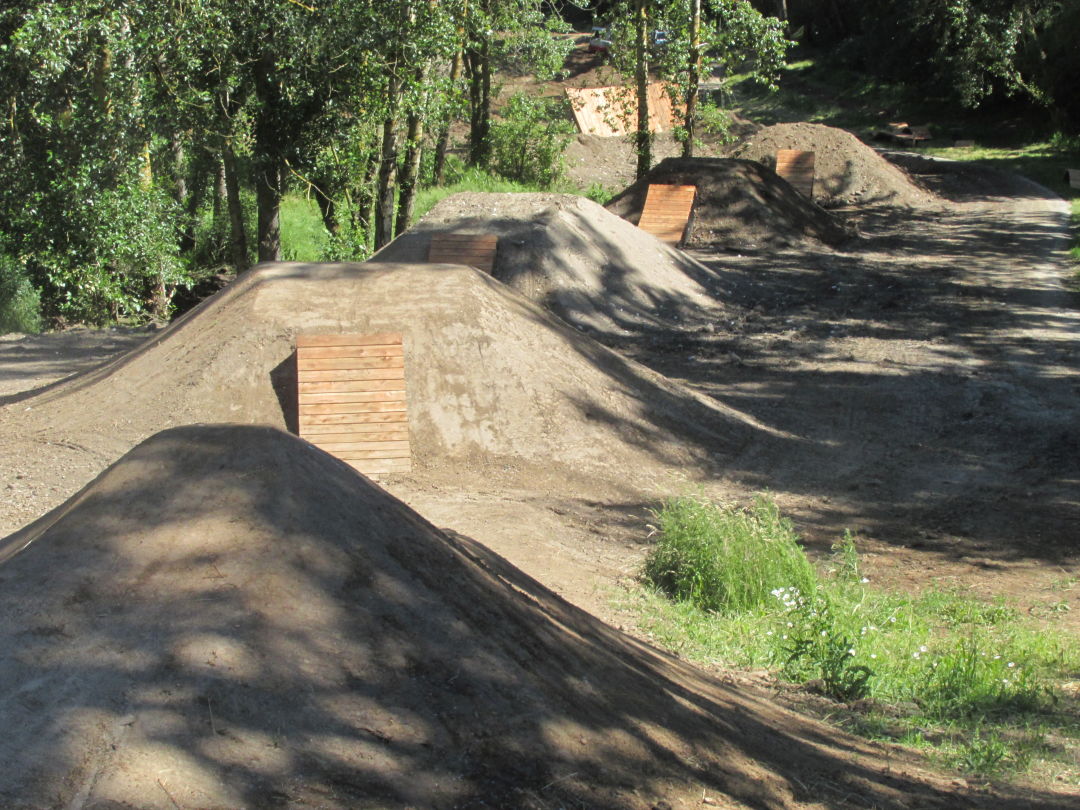
Newly constructed jumps—part of the Dirt Lab component of Gateway Green, unveiling June 24.
Image: Linda Robinson
“We wanted to explore ways that we could integrate active recreation with environmental restoration and make this like a working laboratory,” says Gilbert. “We wanted to demonstrate that the two aren’t diametrically opposed, that the two can co-exist, and in fact, maybe even enhance one another.”
The hope is that Gateway Green will play a community role that goes beyond helping to redress a park deficiency in this high-traffic pocket of NE Portland. The site's trails also provide pedestrian connections between formerly disconnected neighborhoods like Parkrose and Hazelwood. Organizers are also hoping that the park's eventual nighttime lighting—to facilitate 24-7 riding at the Dirt Lab—will be self-sustainable. The park is currently under consideration by ODOT to become a green energy demonstration site. If selected, the department could install solar panels that would allow the park to generate its own energy and recycle its own waste.
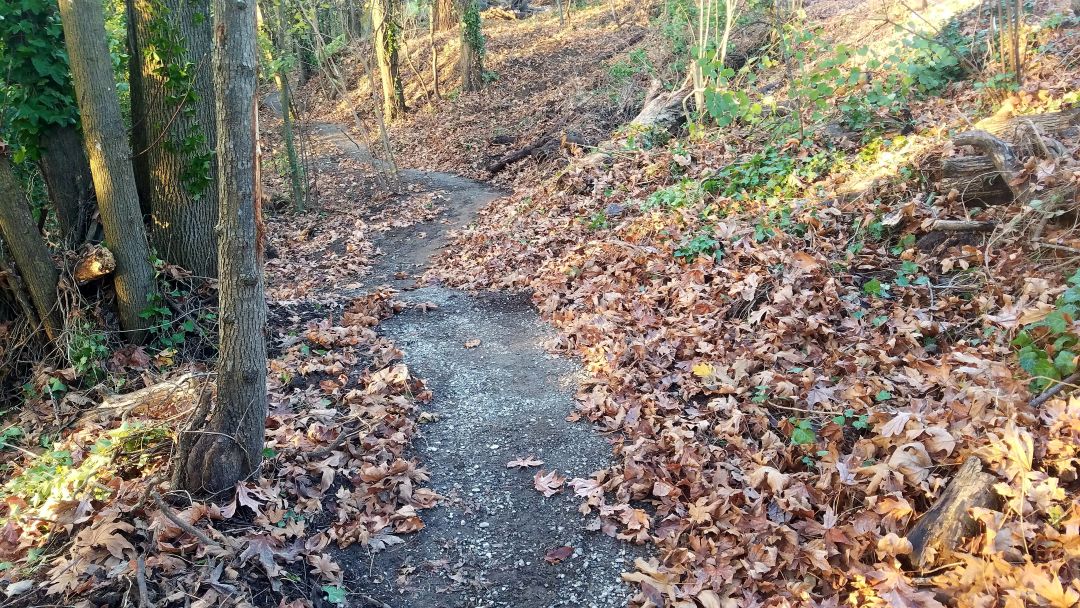
It's not all dirt at Gateway Green. Above, a trail segment winds through woods.
Image: Friends of Gateway Green
“We’d love to be able to demonstrate Portland’s commitment to green and sustainability,” explains Gilbert.
Currently, a conduit of unfiltered stormwater from I-205—full of oils, chemicals, and metals—runs right alongside the site, once part of the historic Rocky Butte jail, and on into the Columbia River. The island of land that Gateway Green occupies remained undeveloped and overlooked since the completion of I-205 in 1983.
Gilbert says the park can play a role in intercepting those chemicals before they reach the river. “Our idea is to ventilate that pipe and let it naturally percolate through the porous soil, which will keep out a ton of pollutants,” says Gilbert. Right now, 25 acres of the park have been developed, but Gilbert says that eventually all 38 acres could find some park use. The long-term vision also includes plans for a wetland, a water cleansing demonstration project, a nature play, and an education center—along with that nighttime lighting and maybe even a MAX Red Line stop right at the park. (All plans, Gilbert says, are of course contingent on additional fundraising.)
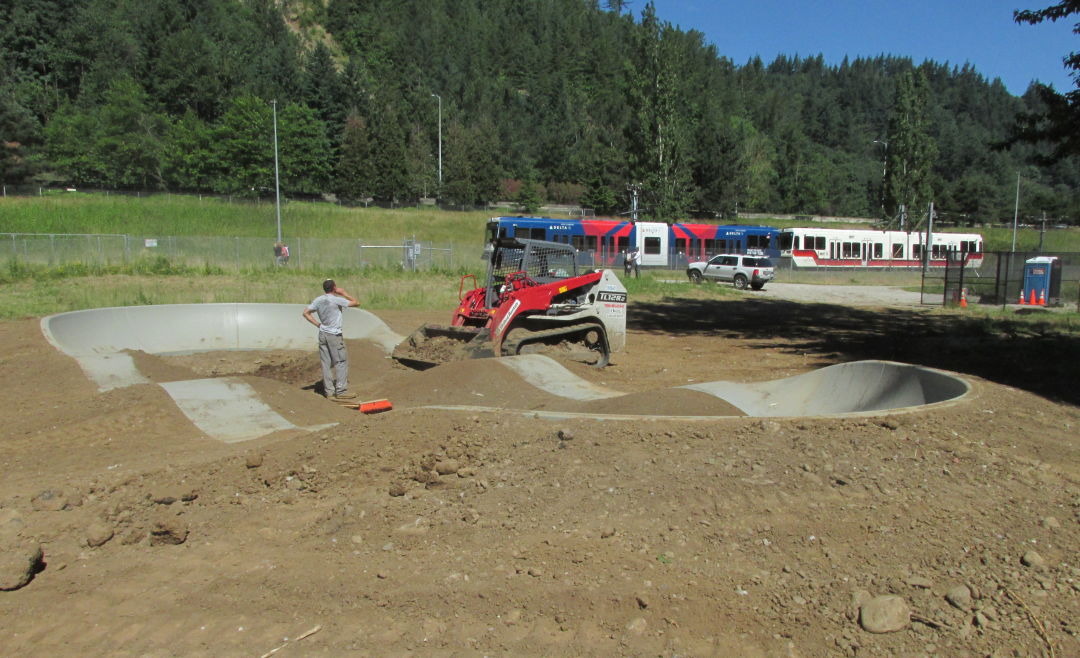
Construction of a skills course feature at gateway Green, with a MAX Red Line Train passing in the background. Eventually, Gateway Green advocates hope to see a train stop built right here, at the park.
Image: Linda Robinson
Gilbert says it could be years before Gateway Green is fully complete. For now, the realization of the project's first phase is plenty of cause for celebration. The Gathering at Gateway Green will take place June 24, from 11 a.m. to 4 p.m. Bring the kids, says Gilbert, and your mountain bikes—and consider taking the MAX to the nearest stop: Gateway Transit Center, a quarter-mile walk or bike ride from the new park, by way of the I-205 multi-use path. As Gilbert says, “the heart of this whole program is recycling.”


